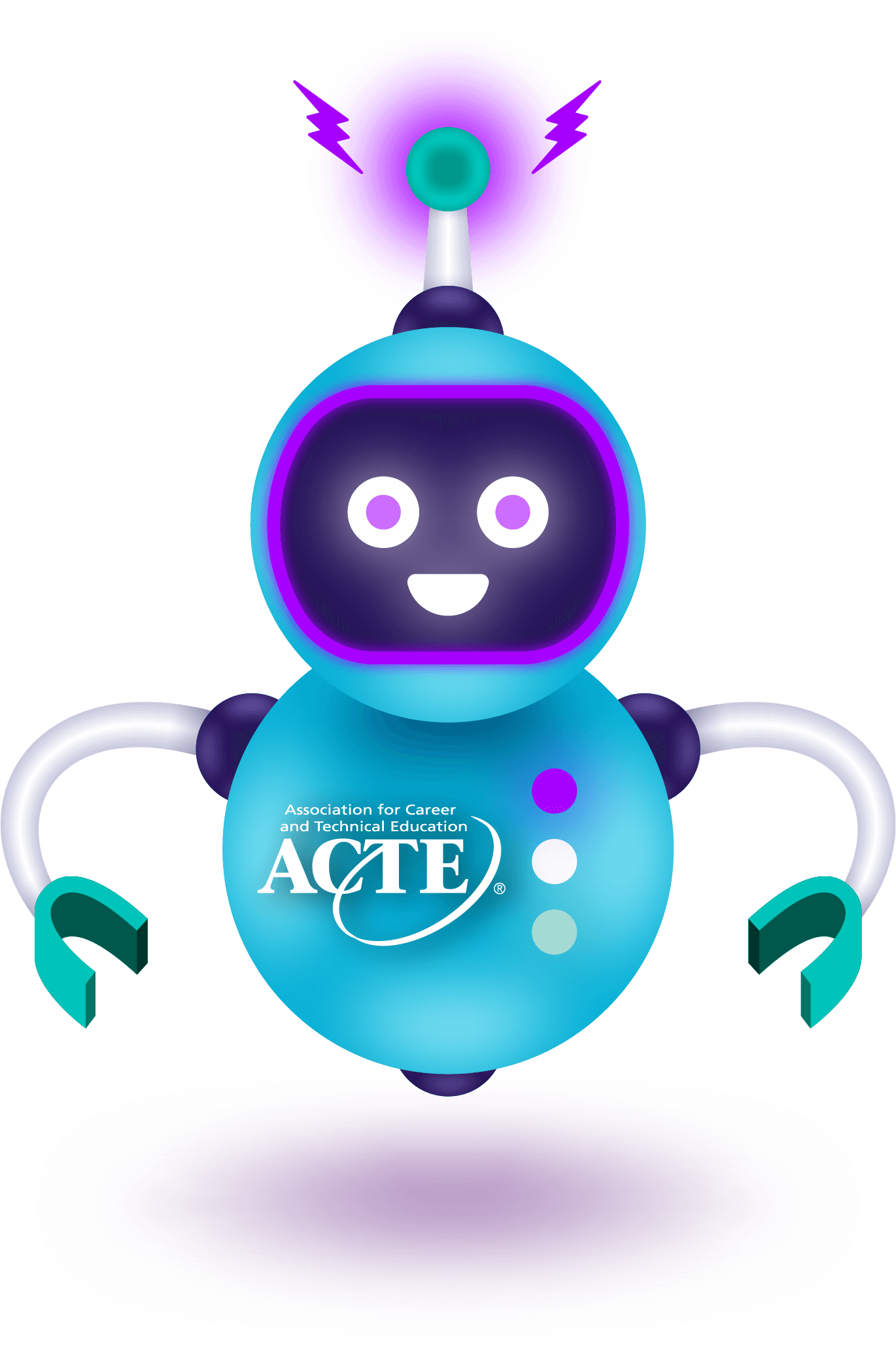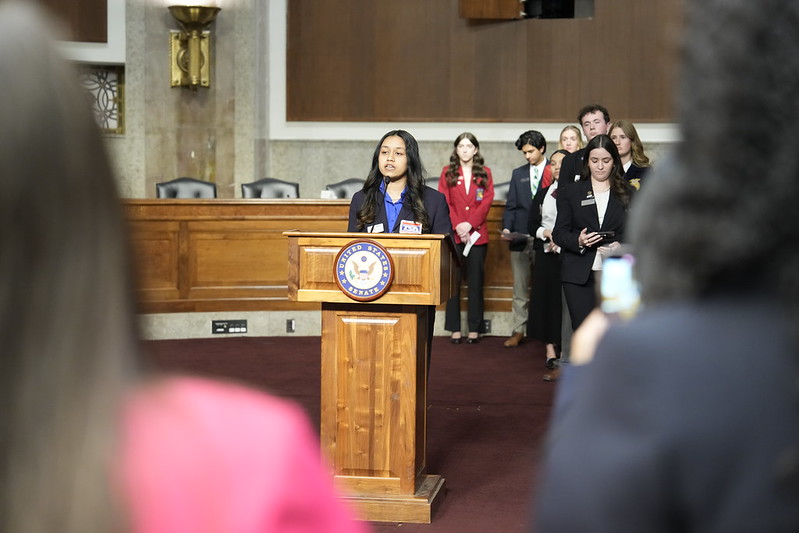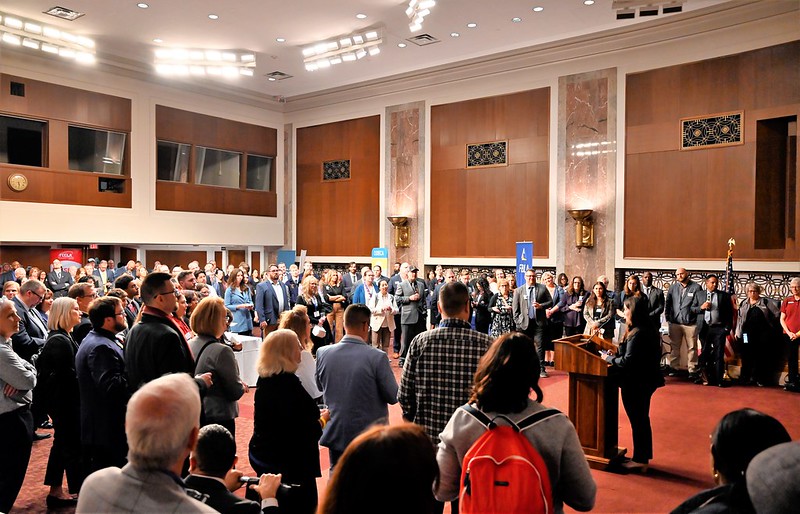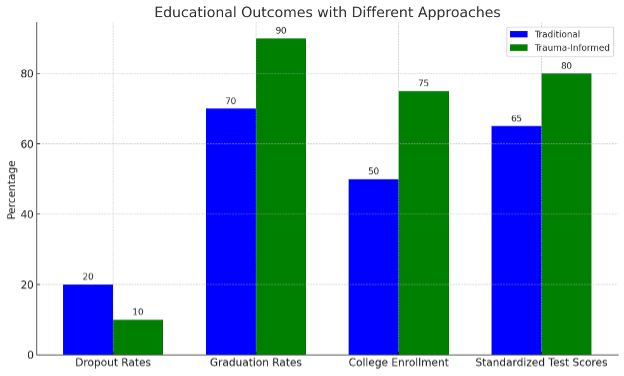Cory Torppa is the director of CTE for the Kalama School District in Kalama, Washington. He is also a CTE instructor at its high school. His goal is for the district to offer high-quality programs that prepare students to demonstrate in-demand skills.
Kalama High School partnered with the Port of Kalama to open a school store in the new Mountain Timber Market. The CTE program’s construction class built the store, called the Chinook Shoppe, in a modular fashion so it could be transported and installed at the market in time for the grand opening. The store is stocked exclusively with Kalama-themed products fabricated or decorated by students. They are all designed to appeal to local residents and to the tourists who arrive on cruise ships.
We talked with Torppa about this extraordinary outlet for his CTE students’ projects, how he developed his CTE programs, and what skills and equipment students are using to fabricate, decorate, and market their products.

First, please tell us how you came to direct Kalama School District’s CTE program?
I am currently finishing my 20th year of teaching career and technical education. My mom was a teacher, and my dad was a general contractor. So I have been around construction since I could walk. I decided I wanted to be a CTE instructor! While I absolutely loved building houses with my dad, I saw the toll it took on his body. I thought that by teaching CTE courses I could still be involved with construction and pass on technical skills that I have been taught. 
I am finishing my seventh year at Kalama High School, where I teach construction, engineering design, and manufacturing courses. In 2020, I completed my credentials to be a CTE director in Washington, and I became the CTE director for the Kalama School District. Since taking over the CTE director role at Kalama, the full-time-equivalent (FTE) student enrollment in CTE courses has increased from 12.6 FTE in 2018–19 to 58.2 FTE in 2023–24.
How has your program evolved?
When I first started teaching at Kalama High School, I designed a course that teaches ninth graders how to plan, design, and fabricate projects using multiple output tools. We use vinyl cutters, laser engravers, 3D printers, a sublimation printer, a UV printer, a direct-to-film printer, and a large-format printer and cutter to create our projects. The ultimate goal is to prepare students with the technical skills they’ll need in other classes, including art and graphic communications, construction, engineering design, manufacturing, marketing, woodworking, robotics, and much more.
The Chinook Shoppe was created to give students an opportunity for real-world experience. They learn about planning, designing, and manufacturing products to meet a high standard and address current market demand. Art and marketing students work with the engineering design students to create products and to track sales and trends.
Stacy Jones, Kalama High School’s career connected learning coordinator, oversees the Chinook Shoppe. She tracks the products and sales, and she creates schedules for student workers. Jones is the one behind the scenes that makes the Chinook Shoppe function. She has done incredible work to make the store successful.
At what point did you decide to expand the equipment in your classroom facilities? What types of projects did you want to produce?
After winning the grand prize grant from Harbor Freight Tools for Schools and given the opportunity to open the Chinook Shoppe, I knew it was time for an upgrade. So, I reached out to Andy Hill from Northwest Technical Products. I’ve always purchased equipment from him, and he recommended that we invest in the Roland DG equipment we now use daily.
We knew that with this additional equipment, our students would be able to produce even more high-quality products. Like sweatshirts, T-shirts, coasters, car coasters, tumblers, and keychains.

Do you and your students also make customized products for the school district?
We do! We create customized T-shirts, sweatshirts, and sport stickers for our schools. The ability to transfer a design that a student creates by hand into a bag design or sweatshirt design has been impressive.
What equipment do you use for apparel production?
We purchased a Roland DG VersaSTUDIO BY-20 direct-to-film (DTF) printer. The BY-20 enables us to print production designs as we need them, saving a lot of time and space. Also, DTF prints feel nice on a shirt. This is a new printer for us, but so far, the prints we’ve produced using the BY-20 have been very high-quality. They’ve turned out great.
Kalama High School also purchased a Roland DG VersaUV LEF benchtop UV flatbed printer. That allows us to print ink on various types of materials and products that other types of printers can’t. In addition, the setup is easy for printing. We use the LEF to print directly on wood, cork, and ceramic coasters; wood and 3D printed key chains; metal tumblers; and wooden lasered ornaments.
We also use the UV printer to help create puzzles. The process includes laser engraving the wood into puzzle pieces, creating a 3D jig for the puzzle, and then UV printing graphics on the puzzle pieces in the jig. Then we print the packaging sticker for the puzzle boxes on the wide-format printer and cutter. The opportunity to work on projects like these — ones that require using multiple technologies — has enhanced the educational experience for our students.
How else do you use your wide-format printer and cutter?
We use the Roland DG TrueVIS SG3-300 30-inch printer to print and cut signs, banners, decals, and heat transfer vinyl for apparel. It’s nice to be able to print and cut stickers in mass quantities.
Where do you see your program going from here?
I purchased the Roland DG equipment to do exactly what we are doing, and it’s pretty exciting to see it all happen. The profits from the Chinook Shoppe allow us to purchase more supplies for our programs. I look forward to our students’ developing additional products and to enhancing our CTE programs in the coming years.






















